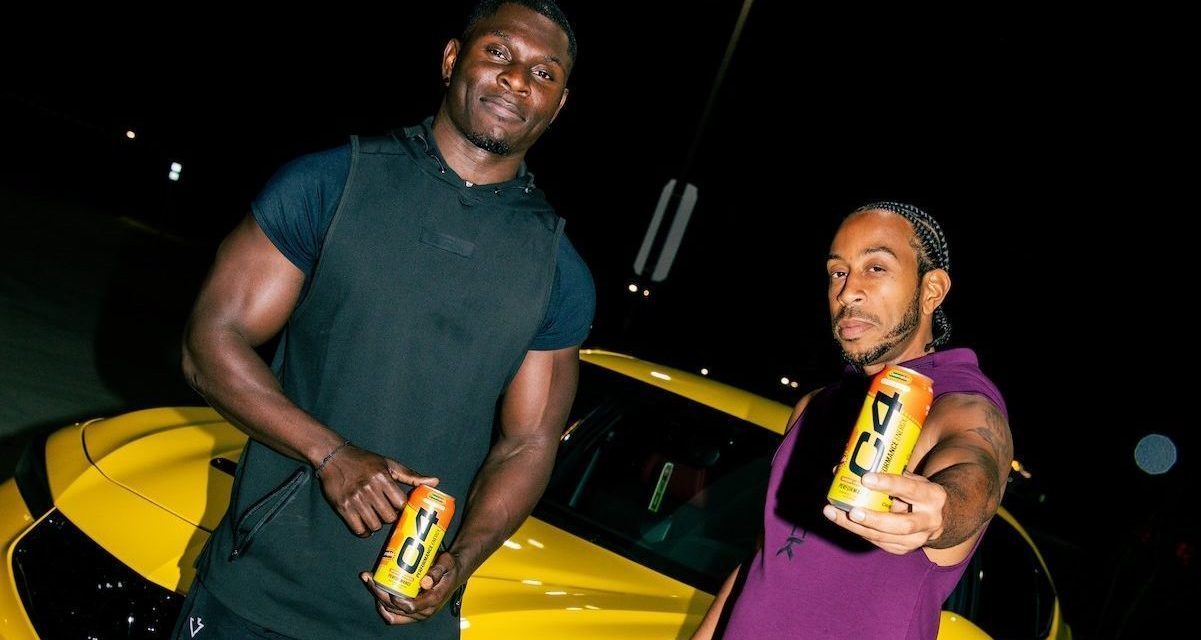Nostalgia for childhood candy flavors is all the rage for energy drinks like C4

Energy drink brands are teaming up with candy and treat brands on limited-edition flavors reminiscent of Halloween hauls and pool parties.
C4 has Skittles, Starburst, Popsicle and Hawaiian Punch flavors of energy drinks and is now increasing marketing around its can with Creamsicle. Ghost Energy offers Sour Patch Kids, Swedish Fish, Warheads and Bubbalicious flavors, while Ryse Fuel, which sells both supplements and energy drinks, has a deal with Sour Punch Straws. Earlier this year, Liquid I.V., a powdered hydration brand, launched a Firecracker Popsicle flavor.
These partnerships, which have ramped up in the past few years, are largely a bid to bring in more Millennial and Gen Z customers. Thirty percent of young people in the U.S. consume energy drinks on a daily basis, and two-thirds of energy drink consumers are 13 to 35 years old. Competition for energy drinks is tight — Red Bull alone sold more than 12 billion cans worldwide in 2023 — but energy drink brands are betting that nostalgic flavors like Popsicle Grape and Sour Blue Raspberry can give them an edge. They are also an important customer acquisition tool — C4 said that 60% of customers who purchased the three Popsicle flavors it debuted this year were new to the brand.
“What we see from our consumers is they love flavor,” Katie Geyer, vice president of talent, partnership & experience at C4 parent company Nutrabolt, told Modern Retail. “Every time we launch a new flavor, they’re constantly asking for more. It’s become table stakes in the performance energy category to always have those flavors that excite your consumer. So we wanted to keep giving them what they want.”
C4’s newest flavor, a collaboration with Creamsicle, went into 7-Elevens throughout the U.S. this spring. It took approximately 12 to 18 months to develop the product, Geyer estimated, and the brand hopes to up sales this week with a new marketing campaign featuring Ludacris. Fans can enter a contest to win a yellow Acura Integra Type S delivered by Ludacris and his trainer, as well as a year’s supply of C4 energy drinks.
Limited-time collaborations are a small but growing part of C4’s business. According to Geyer, C4’s Pink Starburst flavor is the number-one selling SKU among all licensed energy drinks in U.S. convenience stores. Creamsicle is the number-two velocity SKU at 7-Eleven, a metric that refers to how frequently a SKU is picked from a storage location. C4 is also seeing momentum with its three Popsicle SKUs: Popsicle Grape, Popsicle Cherry and Popsicle Hawaiian Pineapple.
These limited-time flavors have a ripple effect on other parts of Nutrabolt’s business. C4 energy drinks, as a whole, perform better in stores that carry the licensed collaborations, Geyer said. Nutrabolt saw 60% higher velocity across the C4 portfolio at 7-Elevens with the Creamsicle flavor and 18% higher velocity in stores with the Popsicle flavors. This lift is crucial, Geyer said, because core flavors are still the mainstay of C4’s business. C4 eventually wants to have a 30/70 split between licensed collaborations and core flavors, though Nutrabolt declined to share the current ratio.
Other energy drink and supplement brands are seeing success from their limited-edition collaborations. As of June 27, Ryse has sold nearly 184,600 packs of energy drink flavors, including Sour Punch Straws and Kool-Aid, via TikTok Shop. The brand was also just named GNC’s Breakout Brand of the Year and has made $6 million in gross merchandise value on TikTok Shop.
Sally Lyons Wyatt, global evp & chief advisor for consumer goods & food service insights at Circana, told Modern Retail that these energy drink collaborations can be exciting because “consumers get the flavors they love in a different form, and they get to have them in a drink that’s providing the benefits they’re looking for,” she explained. What’s more, many single-serve energy cans sell for under $3, which may be attractive to consumers on a budget.
But some energy drink flavors — especially when they involve candy brands popular among kids — are getting pushback from parents and organizations. Earlier this year, two plaintiffs filed a class action lawsuit in Chicago against Ghost Energy, accusing the brand of using candy flavors to misleadingly market their products to children. In 2022, ad watchdog TINA.org and the UConn Rudd Center for Food Policy & Health filed a complaint with regulators for a similar reason.
Wyatt told Modern Retail that cases like these show that it’s necessary to be upfront with energy drink consumers. “Transparency is critically important,” she said. “I also think having a variety of options to cater to whatever the person may want [is important]. Some people want that higher level of caffeine, and that can be their choice. But for consumers of all ages that may not understand the impact… I think there needs to be education. And I think there needs to be variety.”
Some companies are stepping up their transparency efforts. C4, which also makes supplements, reformulated its pre-workout powders to have new ingredients and more transparent labeling. Meanwhile, Ghost Energy calls itself the “first full-disclosure energy drink” and says that all of its ingredients are listed on the label.
Nutrabolt’s Geyer said that in order to grow its licensing business, C4 has a research team that looks into emerging trends and flavors and asks customers about their interests via surveys. This year, for example, was a prime time to roll out the Creamsicle flavor, Geyer said, because the team had noticed an uptick in Orange Cream, Orange Dreamsicle and Orangesicle flavors from competitors. “We’re constantly testing, trying and formulating [flavors] so that we’re ready to go when we see an opportunity,” she said.
